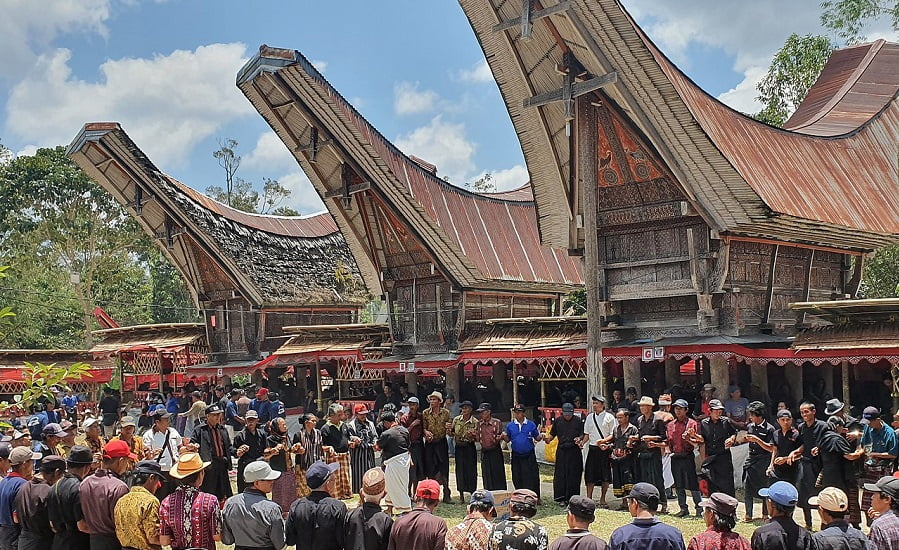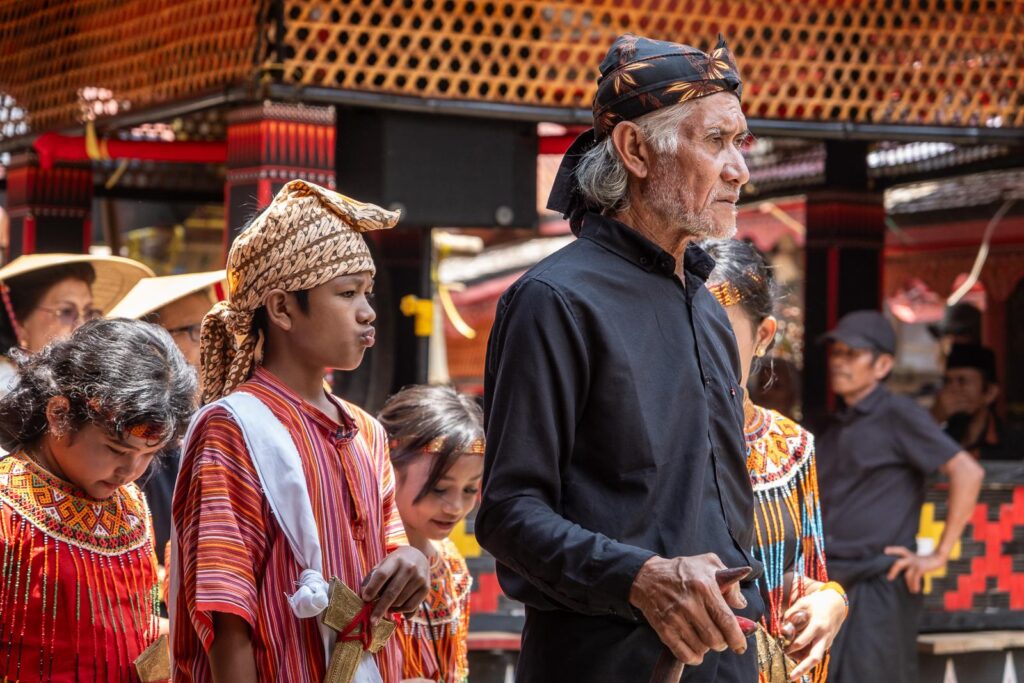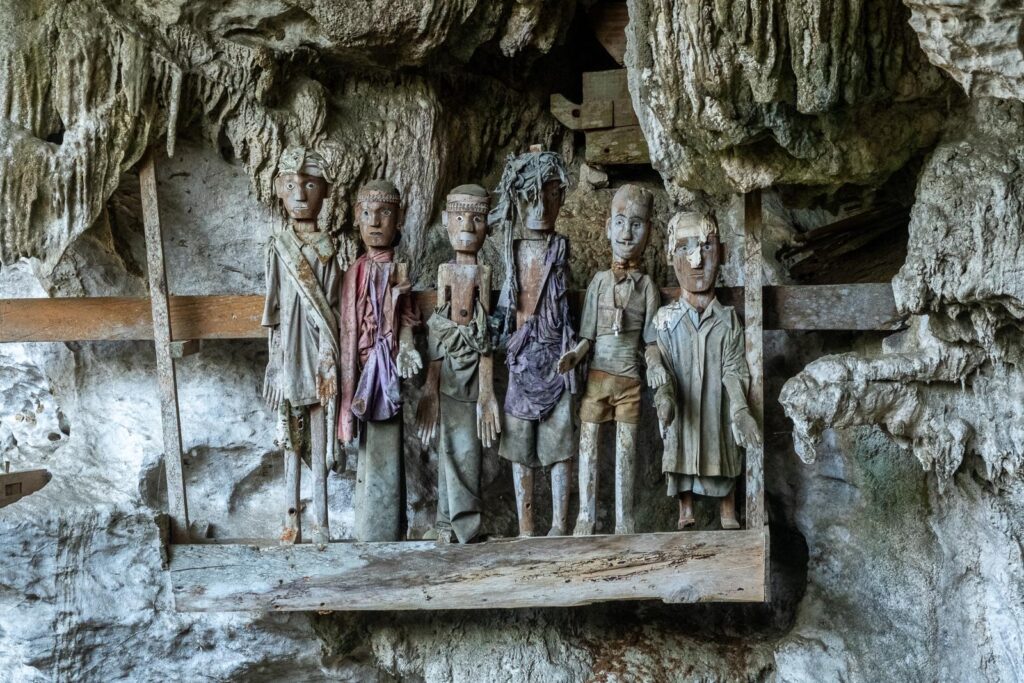High in the rugged mountains of South Sulawesi, Indonesia, lies Tana Toraja—a land where the living and the dead share an extraordinary connection. Known worldwide for its elaborate funeral rituals, the Toraja people have preserved a unique cultural heritage that honors death as a continuation of life. Visiting Tana Toraja offers a profound glimpse into a society where death is not feared but celebrated, a time for family, community, and spiritual passage.
The Land and the People

Tana Toraja, meaning “Land of the Toraja,” is a region of lush valleys, steep cliffs, and intricate rice terraces. The Toraja people have inhabited this mountainous landscape for centuries, developing a rich culture deeply tied to their land and ancestors.
The Toraja language and customs distinguish them from other Indonesian ethnic groups, and their animist beliefs blend with Christian influences introduced during the colonial era. Central to their worldview is the belief that the soul journeys after death and requires proper rites to ensure safe passage.
The Significance of Death Rituals
Unlike many cultures that view funerals as somber farewells, the Toraja approach death as a vital celebration. Funerals, or Rambu Solo’, are complex ceremonies lasting several days, involving music, dance, feasts, and animal sacrifices. These events reaffirm social bonds, display family status, and honor the deceased’s spirit.
What sets Toraja funerals apart is the extended mourning period. The dead may be kept in the family home for weeks, months, or even years before the funeral takes place, allowing relatives to gather funds and prepare elaborate rites.
Preparing for the Funeral
When a person dies, they are washed and dressed in traditional clothes, then laid in a bamboo coffin. In some cases, the deceased are kept in the house, sometimes seated in chairs, as if still alive. This practice reflects the belief that death is a transition, not an immediate end.
The funeral preparation involves the entire community. Families raise livestock, usually water buffalo and pigs, which are central to the rituals. The number of animals sacrificed corresponds to the social status of the deceased and their family’s wealth.
The Funeral Ceremony

The Rambu Solo’ is a spectacle of music, dance, and reverence. Traditional Gamelan music fills the air while dancers perform elaborate movements. The slaughter of buffalo is a solemn act believed to release the spirit and secure favor in the afterlife.
Carved wooden effigies called tau tau are crafted to represent the deceased, placed in cliffside caves or hanging graves, guarding their earthly remains. These statues serve as eternal witnesses to family legacy and protection.
Unique Burial Practices
The Toraja have distinctive burial sites. Beyond the cliff graves, where coffins are carved into rock faces, are cave burials and hanging graves. These methods reflect spiritual symbolism—the elevation of the dead closer to the heavens.
In some villages, families maintain small ancestral houses, called Alang, where funeral relics are kept, and rituals continue to honor the departed.
Cultural Impact and Tourism

The unique Toraja funerals have drawn international attention, with tourists eager to witness these vibrant ceremonies. While tourism brings economic benefits, it also poses challenges of cultural preservation and respect.
Visitors are encouraged to approach these rituals with sensitivity, understanding their deep spiritual significance rather than viewing them as mere spectacles.
Modern Challenges
Tana Toraja faces pressures from modernization, economic change, and religious shifts. Younger generations balance traditional customs with contemporary life, sometimes adapting or abbreviating funeral rites.
Efforts to preserve Toraja culture involve education, documentation, and responsible tourism, ensuring that these ancient traditions endure for future generations.
Final Reflections
The rituals of the dead in Tana Toraja remind us that death is not an ending but a vital part of life’s cycle. Through elaborate ceremonies, the Toraja honor their ancestors, affirm community, and bridge worlds seen and unseen.
Visiting Tana Toraja is to step into a living tapestry of belief, resilience, and reverence—where every dance, every sacrifice, and every carved statue tells a story of life beyond death.
